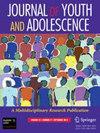亲子关系质量的代际影响:亲子关系在原生家庭中的作用。
IF 3.6
1区 心理学
Q1 PSYCHOLOGY, DEVELOPMENTAL
引用次数: 0
摘要
现有证据表明,养育子女的代际传递,但研究结果受到重要的理论、概念和方法挑战的限制。其中包括对父亲的预测因素的关注不足,发育时期和代际结构的不一致,母亲和父亲作为预测因素的缺失,以及非居民父亲参与程度的遗漏。目前的研究利用父亲和青少年的报告,调查了青春期(12-15岁)父亲-青少年二人组(N = 276; 69%是黑人,17%是西班牙裔,14%是白人,49%是男孩)的代际预测因素。父亲与母亲的关系与他感知到的与青春期孩子的关系质量有关,但与父亲的关系无关。青少年对父亲-青少年关系质量的看法没有代际连续性的证据。这些发现强调了原生家庭关系质量对下一代的长期影响,尽管影响有限。本文章由计算机程序翻译,如有差异,请以英文原文为准。
Intergenerational Influences of Father-Adolescent Relationship Quality: The Role of Parent-Child Relationships in the Family of Origin.
Existing evidence suggests intergenerational transmission of parenting, but findings are limited by important theoretical, conceptual, and methodological challenges. These include insufficient attention to predictors of fathering, inconsistencies in developmental periods and constructs across generations, the absence of both mothering and fathering as predictors, and the omission of levels of involvement among nonresident fathers. The current study examines intergenerational predictors of fathering among father-adolescent dyads (N = 276; 69% Black, 17% Hispanic, 14% White; 49% boys) during adolescence (ages 12-15) using both father and adolescent reports. A father's relationship with his mother was associated with his perceived relationship quality with his adolescent child, but his relationship with his father was not. There was no evidence of intergenerational continuity in adolescent perceptions of father-adolescent relationship quality. These findings underscore the long-term, although limited, influence of relationship quality in the family of origin on the next generation.
求助全文
通过发布文献求助,成功后即可免费获取论文全文。
去求助
来源期刊

Journal of Youth and Adolescence
PSYCHOLOGY, DEVELOPMENTAL-
CiteScore
8.20
自引率
6.10%
发文量
155
期刊介绍:
Journal of Youth and Adolescence provides a single, high-level medium of communication for psychologists, psychiatrists, biologists, criminologists, educators, and researchers in many other allied disciplines who address the subject of youth and adolescence. The journal publishes quantitative analyses, theoretical papers, and comprehensive review articles. The journal especially welcomes empirically rigorous papers that take policy implications seriously. Research need not have been designed to address policy needs, but manuscripts must address implications for the manner society formally (e.g., through laws, policies or regulations) or informally (e.g., through parents, peers, and social institutions) responds to the period of youth and adolescence.
 求助内容:
求助内容: 应助结果提醒方式:
应助结果提醒方式:


